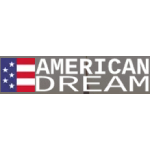Introduction
The U.S. Customs and Border
Protection (CBP) program plays a critical role in managing international travel
and trade to and from the United States. For travelers departing from or
arriving in Dublin, Ireland, it's important to understand how CBP operates and
how it impacts your journey.
Custom and Border Protection Program in Dublin
Dublin Airport is home to one
of the few U.S. Preclearance facilities located outside of the United States.
This facility allows passengers flying to the U.S. to clear U.S. customs and
immigration in Dublin before departing, making for a more convenient and
efficient process upon arrival in the United States. Key points to note about
the CBP program in Dublin include:
Passport and Visa Check: CBP officers in Dublin will verify your passport, visa, and other travel documents, so it's essential to ensure all your documentation is in order.
Customs Inspection: Passengers will also go through a customs inspection, including a review of items you plan to bring into the United States. Understanding U.S. customs regulations and restrictions is vital to avoid any issues.
Security Screening: Security checks, including screenings and baggage inspections, are conducted to ensure safety during your flight.
Arrival in the U.S.: After clearing CBP in Dublin, you will arrive in the U.S. as a domestic passenger, avoiding long immigration lines and customs processing.
CBP Preclearance Benefits: This facility offers benefits such as reduced wait times upon arrival in the U.S., quicker connections to domestic flights, and easier travel for passengers who have visited countries subject to the U.S. Visa Waiver Program.
L-1B Visa
The L-1B visa is a specific
category of U.S. work visa designed for intracompany transferees with
specialized knowledge. Here, we will explore the key details of the L-1B visa,
its eligibility criteria, and how it facilitates the transfer of foreign employees
to the United States.
Eligibility for the L-1B
Visa
Qualifying Relationship: The U.S. employer and the foreign entity must have a qualifying relationship, such as being affiliates, subsidiaries, or branches of the same company.
Specialized Knowledge: The applicant must possess specialized knowledge that is essential to the employer's operations, including proprietary products, services, processes, or techniques.
Continuous Employment: The applicant should have been working for the foreign company for at least one continuous year within the past three years before applying for the L-1B visa.
Work Position: The L-1B visa is for employees transferring to the U.S. in a position that requires specialized knowledge.
Application Process
Employer Petition: The U.S. employer must file an L-1B visa petition on behalf of the employee with the United States Citizenship and Immigration Services (USCIS).
Supporting Documentation: The application must include supporting documents such as detailed job descriptions, proof of specialized knowledge, and evidence of the qualifying relationship between the U.S. and foreign companies.
Duration: L-1B visas are initially granted for up to three years, with the possibility of extension for a maximum of five years.
Dual Intent: L-1B visa holders may have dual intent, which means they can pursue lawful permanent residency (a green card) while working in the U.S.
Conclusion
Understanding the U.S. Customs
and Border Protection program in Dublin and the L-1B visa is crucial for
individuals traveling to the United States for work. Whether you are navigating
the preclearance process at Dublin Airport or considering an L-1B visa for
intracompany transfers, staying informed about the requirements and procedures
will help ensure a smooth and successful journey or work experience in the
United States.





Comments